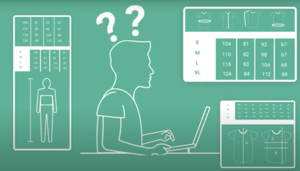Sizing Consistency = Happy Customers

The fashion industry is all about finding the right clothing style and size for customers. However, one of the biggest problems in the fashion industry is the inconsistency of size charts. This problem affects both customers and retailers, as customers cannot find the right size of clothing and retailers face increased returns and costs.
You might wonder how size charts can cause inconsistency. One of the reasons for size chart inconsistency is that different brands and manufacturers use different measurement standards, such as inches or centimeters, for different body parts such as chest, waist, hips, and inseam. Moreover, some brands have applied "vanity sizing," where they change the size of their clothing to make customers feel good, regardless of the actual measurement.
Inconsistency in size charts also has a significant impact on retailers. Customers who buy clothing that does not fit well often return it, leading to increased costs and reduced profits for retailers. Moreover, an increase in the number of returns can have a negative impact on the brand's reputation. The increased number of returns also affects the retailer's supply chain, as the process of returning, restocking, and reselling the clothing is time-consuming and labor-intensive.
Not only retailers, but also customers are affected by the inconsistency of size charts. When customers cannot find clothing that fits comfortably, they can become frustrated and choose to shop elsewhere. This can lead to lost sales for retailers and reduced customer loyalty. Thus, it can be challenging for customers to determine their correct size, which can lead to discomfort and a negative impact on their self-image.
To solve the inconsistency of size charts, retailers must adopt a multi-pronged approach. Here are a few solutions that can help address the problem:
- Standardized measurement standards: One solution is to adopt a standardized measurement standard for all clothing sizes. This can help customers compare sizes between different brands and ensure they find the right size of clothing that fits comfortably.
- Accurate measurements: Retailers should ensure their size charts are based on accurate measurements. This can help customers find the right size of clothing that fits comfortably, reducing the number of returns and increasing customer satisfaction.
- Clear size chart information: Retailers should provide clear and concise size chart information on their website and in-store. This can help customers understand the measurement standards used by the brand and make it easier for them to determine their size.
- Customer feedback: Retailers should encourage customers to provide feedback on the fit of their clothing. This can help the retailer identify areas where they need to improve their size chart and ensure customers find the right size of clothing that fits comfortably.
- Fit models: Retailers can use fit models to test their clothing and ensure their size charts are accurate. Fit models are individuals of different sizes who try on the clothing and provide feedback on the fit. This can help the retailer identify areas where they need to adjust their size chart and improve the overall accuracy of the chart.
- Collaboration with suppliers: Retailers should collaborate with their suppliers to adopt a standardized measurement standard and ensure their size charts are accurate. This can improve the consistency of size charts between different brands and manufacturers, making it easier for customers to find the right size of clothing that fits comfortably.
- Online fit technology: Retailers can use online fit technology, such as Faslet's Size Me Up, to virtually try on clothes and help customers find the right size. This technology uses algorithms to determine a customer's size based on their body measurements, and it can help reduce the number of returns and improve customer satisfaction.
- Transparency of size charts: Stores should be transparent about their size charts and measurement standards. They should provide clear information about their measurement standards on their website and in the store, and they should be willing to answer customer questions about the size chart.
- Continuous improvement: Finally, stores should continuously monitor and improve their size charts. They should use feedback from customers and data from fitting models to identify areas where they need to make changes to their size chart, and they should regularly update their chart to ensure it remains accurate and consistent.
In summary, the inconsistency of size charts remains a challenge in the fashion industry. It is important for retailers to find solutions to help customers.



